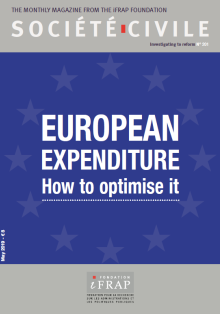Retirement
European expenditure: How to optimise it

Between the 23rd and 26th of May, members of the European Parliament will be elected in the Member States of the European Union (EU), and will notably be responsible for voting on the draft budget presented by the Commission for the 2021-2027 period. Two main questions arise on this occasion.
The first question concerns the Brexit: what would be the consequences of the United Kingdom leaving, one of the three main contributors to the Union budget? According to the most serious estimations1, the Brexit gap caused by the UK leaving should not exceed 9 billion euros if there is a hard Brexit, and significantly less if an agreement is reached. For France, the maximum impact could be in the order of 18% of the gap to be filled2, i.e. 1.6 billion euros per year.
An additional cost that makes it all the more necessary to control the overheads of the European budget — the “administration” section, 7 % of payments in 2017 — that will bear down on a population and economic potential reduced by about 13% after the Brexit.
The second question is more fundamental: what should be the size of the Union’s future budget? There are two opposing views: one for an economically prudent Europe and one for a more spendthrift Europe. The 2021-2027 draft multi-annual financial framework presented by the Commission in May 2018 plans to spend 1,279 billion euros at current value over the entire period, i.e. slightly more than 180 billion a year, representing 1.11% of the gross national income (GNI)3 of the 27 EU countries excluding the United Kingdom, to be compared with credit commitments, excluding UK expenditure, representing 1.16% of the GNI of the same countries during the current period (2014-2020).
But are these amounts really justified? The Commission highlights the fact that the size of the European budget, as a proportion of GNI, decreased between 1993-1999 and 2014-2020, from 1.28% to 1.16%. But this is failing to recognize that the situation in 1993-1999 followed twenty years of continuous increase by the same proportion: towards 1975, the European budget represented only about 0.5% of member countries’ GNI.
In particular, two groups of programmes contributed to pushing and then maintaining this ratio at around 1% of GNI or beyond: structural funds and international policy actions.
- On average, half of the money levied in each country for the European structural funds goes back to the contributing country; the proposal to abolish these financial exchanges back and forth would reduce administrative management costs by € 12.7 billion for the 2021-2027 programme.
- On the EU’s international action, our proposals include eliminating the European external action service and pre-accession assistance for Turkey. Potential savings are € 17.5 billion on 2021-2027 programming.
